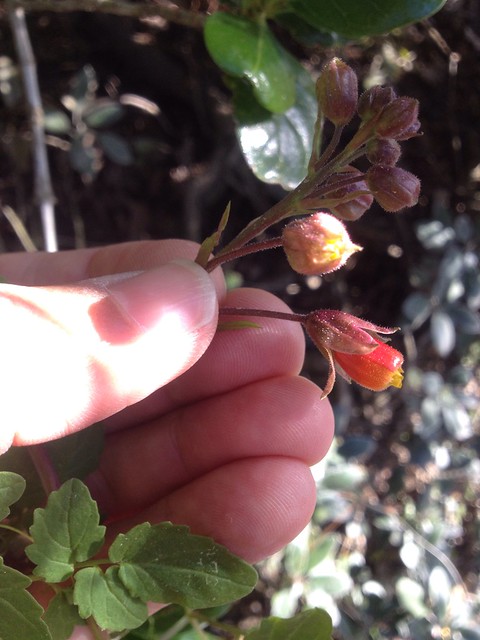RECENT ARTICLES
- CEBRA: An optimised and standardised sampling protocol for BioBlitz
- Stop it people, the plural of anecdote IS data!
- That's no pollinator, that's a flower visitor
- Add a scale to your macro photos
- What to photograph when counting the wild
- Imagine counting the wild on EVERY street in a city!
- My wild counting workflow
- A butterfly flew through
- Why iNaturalist observations without photos can be research grade
- Why you shouldn’t use a spreadsheet for data entry
- All articles ...
Chilean glory creeper, another incipient weed in Christchurch
Urban naturalists in New Zealand live inside a slow motion avalanche of invading weeds spreading out from gardens, that will take centuries to complete. Documenting this invasion is important, as we can stop some of the worst new arrivals.
written Sep 9, 2015 • by Jon Sullivan • Category: Wild Changes

Even the worst weeds begin as a small scattering of wild plants here and there in a landscape. It can take decades, often centuries, for them to gradually build up in numbers until they’re dominating habitats and frustrating people. It’s with that in mind that I’m always on the lookout for wild exotic plants that I’ve not seen before. On Monday, I added another to my wildcounts watch list for Christchurch: the Chilean glory creeper (Eccremocarpus scaber). My list also includes the first Canterbury record of the South African plant, Nemesia floribunda, already a widespread weed around Dunedin (and which I wrote about here), and the Peruvian lily, Alstroemeria aurea (which I wrote about here).

Chilean glory creeper is a rapidly growing vine that is listed on New Zealand’s National Plant Pest Accord, the list of the worst weeds that are banned from sale and distribution. It’s a weed that we don’t want to become widespread. Weedbusters NZ, the government’s weed website, has a useful weed information sheet for the species.
I saw my first wild Chilean glory creeper in Christchurch on Monday, growing in a wooded corner of Cashmere Primary School, where my son goes to school. It was about to flower. I posted an observation with photos on iNaturalist NZ, took a sample for my herbarium, and alerted the city council botanist Trevor Partridge. And next time I’m at the school I’ll dig it out. It most likely came from a nearby garden so I’ll be keeping a close eye out for more.
Consistent with the early stages of an invasion, there have been a scattering of recent records of this species in the wider area in the past decade or so. The last time I saw this species was on a roadside between Little River and Cooptown on Banks Peninsula (see this iNaturalist NZ observation). That patch has since been controlled. The NZ Plant Conservation Network’s plant distribution database contains two local records from the DOC Plant Database, one from Governors Bay in 2002 and one from Barnett Park in Redcliffs in 2006, both likely removed by now. The Australasian Virtual Herbarium has two 2005 records from Christchurch collected by botanists Bill Sykes and Arthur Healy (the exact locations are obscured on that site so I’d have to request them or visit the Allan Herbarium to learn where exactly these were). Botanist Murray Dawson tells me that there might still be some at the end of the Governors Bay coastal walk in Lyttelton Harbour.
Weed populations are at their weakest at this early stage in their invasion. If new incursions continue to be reported and controlled, it’s possible to keep the lid on new weeds. That’s a big “if” though as it hinges on there being enough botanically curious or knowledgeable people about in the area reporting new plants as they find them, and agency support for acting quickly on these reports.
If you see an unusual new plant wild in your neighbourhood, please don’t be shy about posting a photo of it on iNaturalist NZ. It could be the first arrival of a new weed into your local wild.